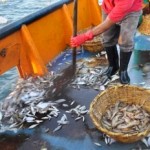

Figure 3: Simulated mean upstream discharge for the present (2000 to 2007) and future climate for the A1B SRES scenario [A1B (2046 to 2065)]. Glacier size in 2050 is based on a best-guess scenario (13). Most critical to projected changes in discharge are future precipitation and temperature and the melt characteristics of snow and glaciers, here modeled using degree-day factors (DDFs). To account for the uncertainty in future precipitation and temperature, the best-guess scenario was run with five different GCMs (CCMA-CGCM3, GFDL-CM2, MPIM-ECHAM5, NIES-MIROC3, UKMO-HADGEM1). For the upper Indus basin, the ice and snow DDFs are constrained by observed runoff. No runoff observations were available for the other upper basins so that DDFs from the Indus were used. To account for this additional uncertainty, we performed a first-order-second-moment analysis (13). Vertical error bars (T1s) from the Indus thus include only the uncertainty about future climate, whereas the projected discharge of the other basins includes uncertainty about both future climate as well as basin-specific DDFs (assumed Gaussian with mean snow DDF = 4 mm °C-1 day-1, mean ice DDF = 7 mm °C-1 day-1, and both with s = 1 mm °C-1
day-1). Vertical error bars around present discharge are due to uncertainty about snow and ice
DDFs only.
We conclude that Asia’s water towers are threatened by climate change, but that the effects of climate change on water availability and food security in Asia differ substantially among basins and cannot be generalized. The effects in the Indus and Brahmaputra basins are likely to be severe owing to the large population and the high dependence on irrigated agriculture and meltwater. In the Yellow River, climate change may even yield a positive effect as the dependence on meltwater is low and a projected increased upstream precipitation, when retained in reservoirs, would enhance water availability for irrigated agriculture and food security.
References
- D. Viviroli, H. H. Dürr, B. Messerli, M. Meybeck, R. Weingartner, Water Resour. Res. 43, W07447 (2007).
- R. V. Cruz et al., in Climate Change 2007: Impacts, Adaptation and Vulnerability. Contribution of Working Group II to the Fourth Assessment Report of the Intergovernmental Panel on Climate Change, M. L. Parry et al., Eds. (Cambridge Univ. Press, Cambridge and New York, 2007).
- W. W. Immerzeel, P. Droogers, S. M. de Jong, M. F. P. Bierkens, Remote Sens. Environ. 113, 40 (2009).
- T. P. Barnett, J. C. Adam, D. P. Lettenmaier, Nature 438, 303 (2005).
- B. C. Bates, Z. W. Kundzewicz, S. Wu, J. P. Palutikof, Eds., Climate Change and Water (IPCC, Geneva, 2008).
- D. Cyranoski, Nature 438, 275 (2005).
- P. Singh, L. Bengtsson, J. Hydrol. 300, 140 (2005).
- H. G. Rees, D. N. Collins, Hydrol. Process. 20, 2157 (2006).
- B. H. Raup et al., Global Planet. Change 56, 101 (2007).
- G. J. Huffman et al., J. Hydrometeorol. 8, 38 (2007).
- S. Siebert et al., Hydrol. Earth Syst. Sci. 9, 535 (2005).
- J. Martinec, Nord. Hydrol. 6, 145 (1975).
- Materials and methods and discussion are available as supporting material on Science Online.
- M. F. P. Bierkens, L. P. H. van Beek, J. Hydrometeorol. 10, 953 (2009).
- T. D. Mitchell, P. D. Jones, Int. J. Climatol. 25, 693 (2005).
- R. G. Barry, Prog. Phys. Geogr. 30, 285 (2006).
- T. Bolch, M. F. Buchroithner, T. Pieczonka, A. Kunert, J. Glaciol. 54, 592 (2008).
- E. Berthier et al., Remote Sens. Environ. 108, 327 (2007).
- N. M. Kehrwald et al., Geophys. Res. Lett. 35, L22503 (2008).
- E. Klees et al., Geophys. J. Int. 175, 417 (2008).
- H. Annamalai, K. Hamilton, K. R. Sperber, J. Clim. 20, 1071 (2007).
- S. Yang et al., J. Clim. 21, 3755 (2008).
- P. Jansson, R. Hock, T. Schneider, J. Hydrol. (Amst.) 282, 116 (2003).
- D. B. Lobell et al., Science 319, 607 (2008).
- This study was financially supported by the Netherlands Organisation for Scientific Research (NWO) through a CASIMIR grant (018 003 002) and by the European Commission (Call FP7-ENV-2007-1 grant 212921) as part of the CEOP-AEGIS project (www.ceop-aegis.org) coordinated by the Université de Strasbourg. We thank P. Ditmar (Department of Earth Observation and Space Systems, Technical University of Delft) for assistance with the GRACE trend analysis.
Notes:
The above study has been published in Science 11 June 2010: Vol. 328. no. 5984, pp. 1382-1385.
It can be accessed at http://www.sciencemag.org/cgi/content/abstract/328/5984/1382










